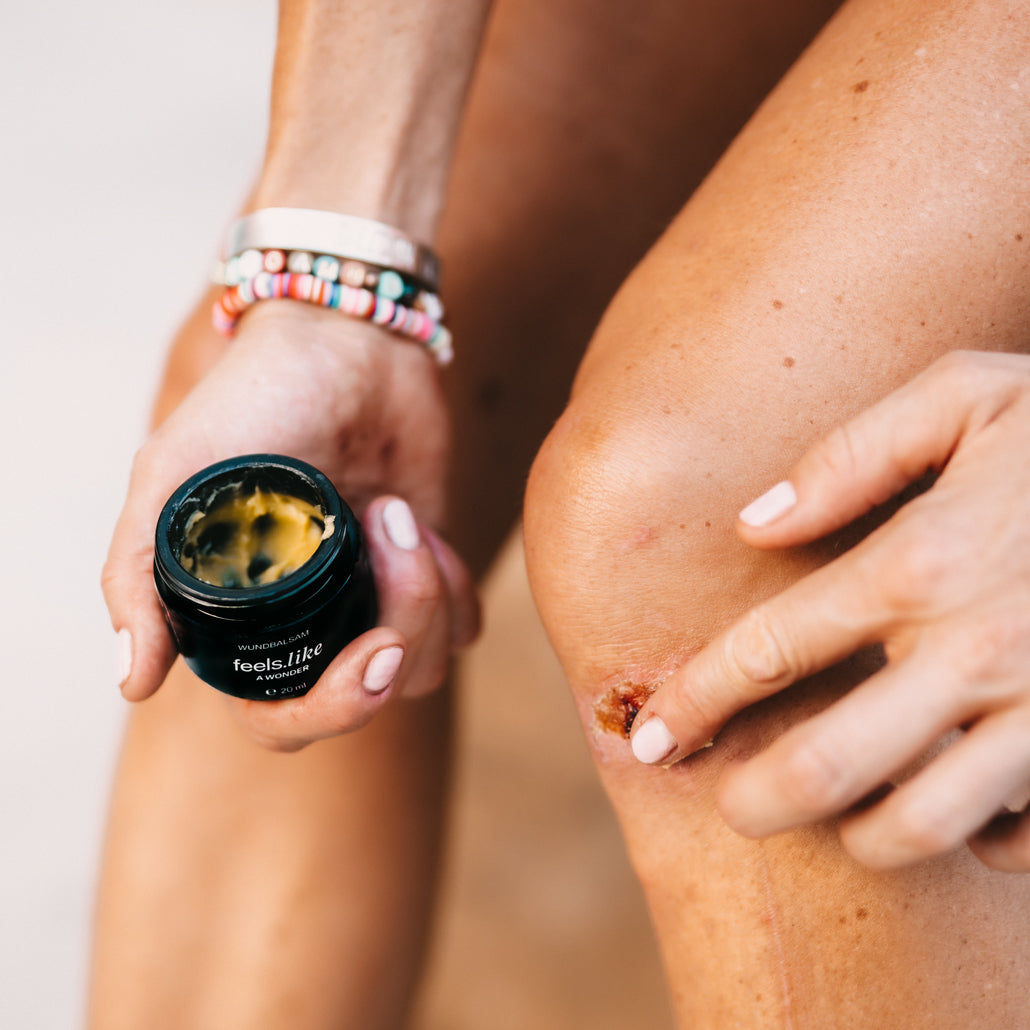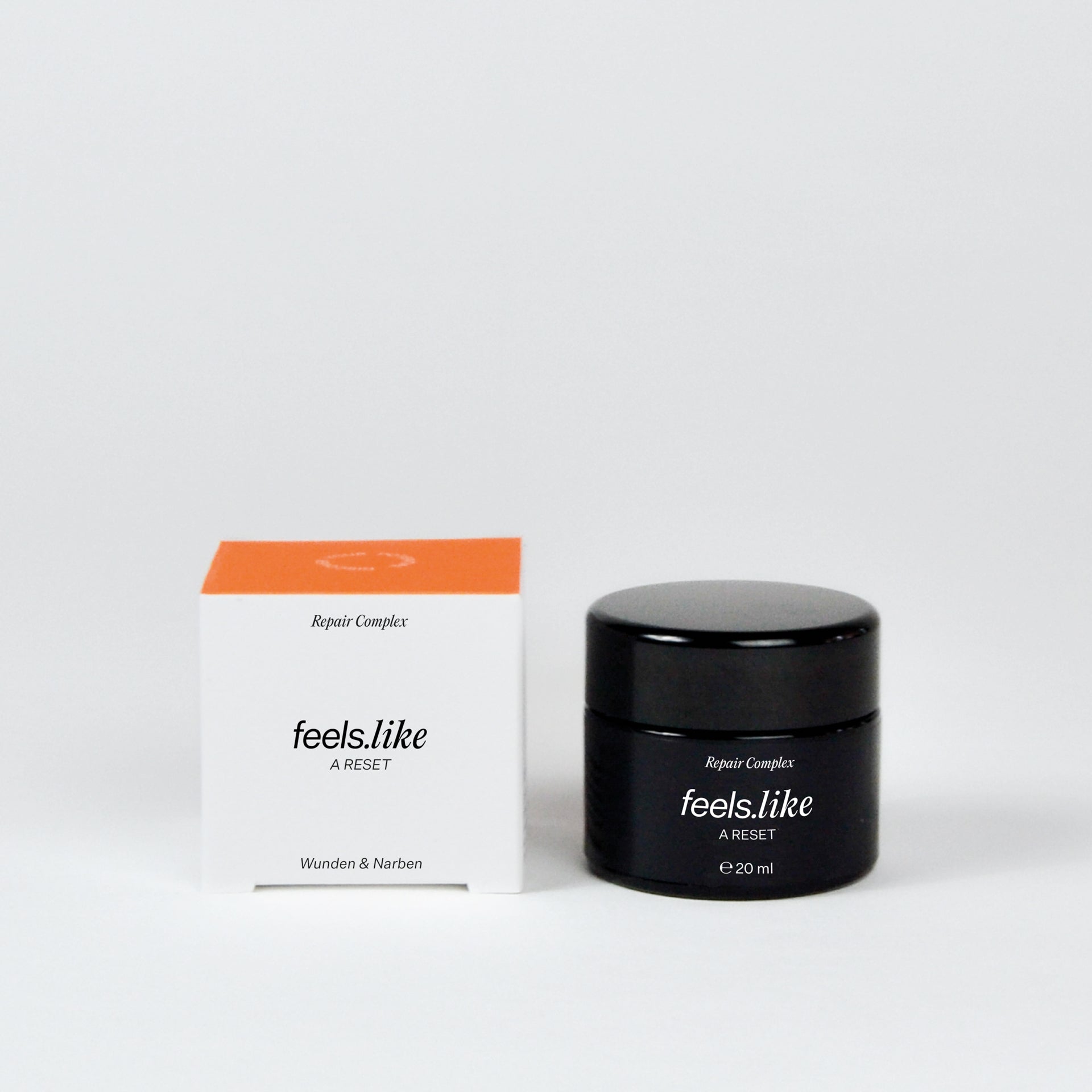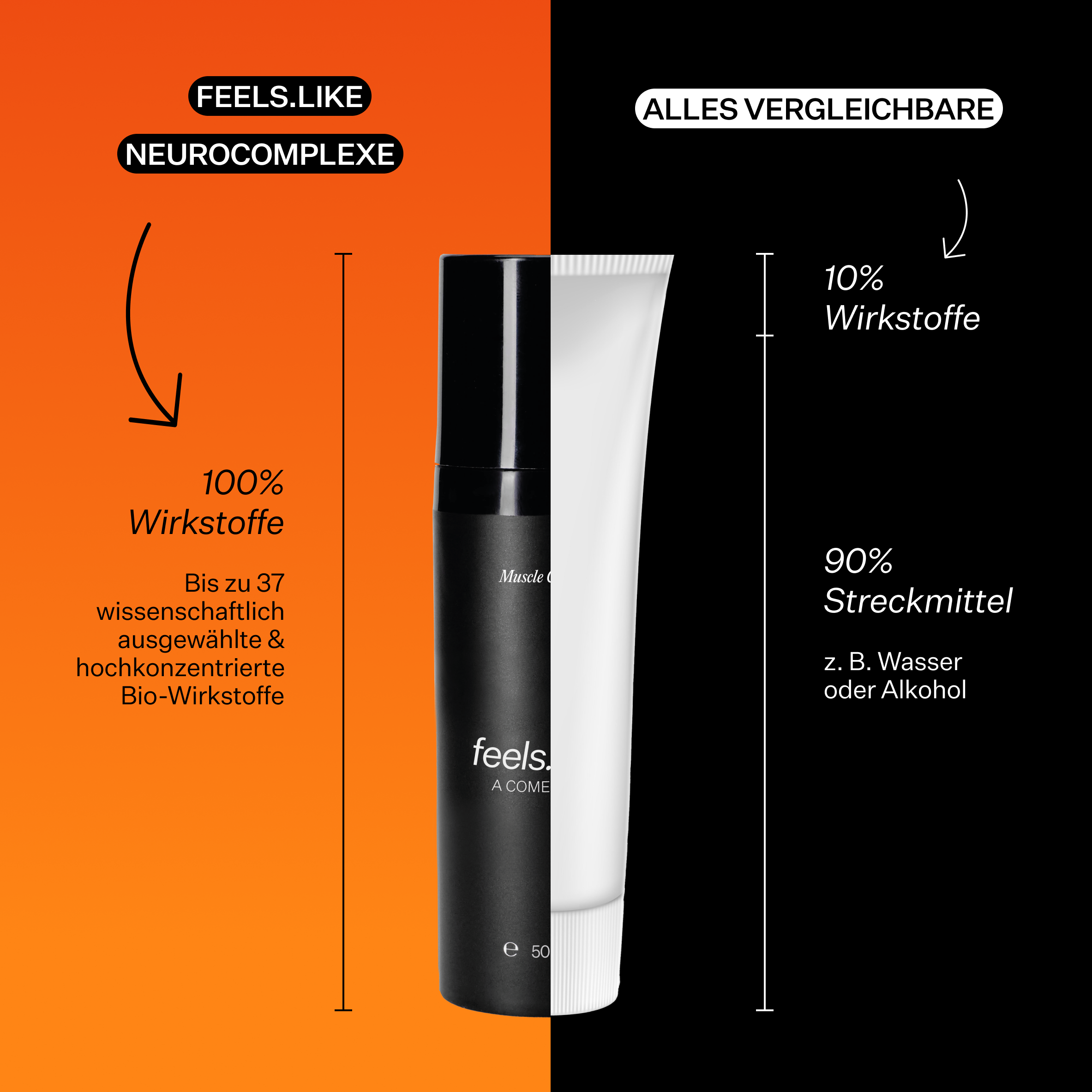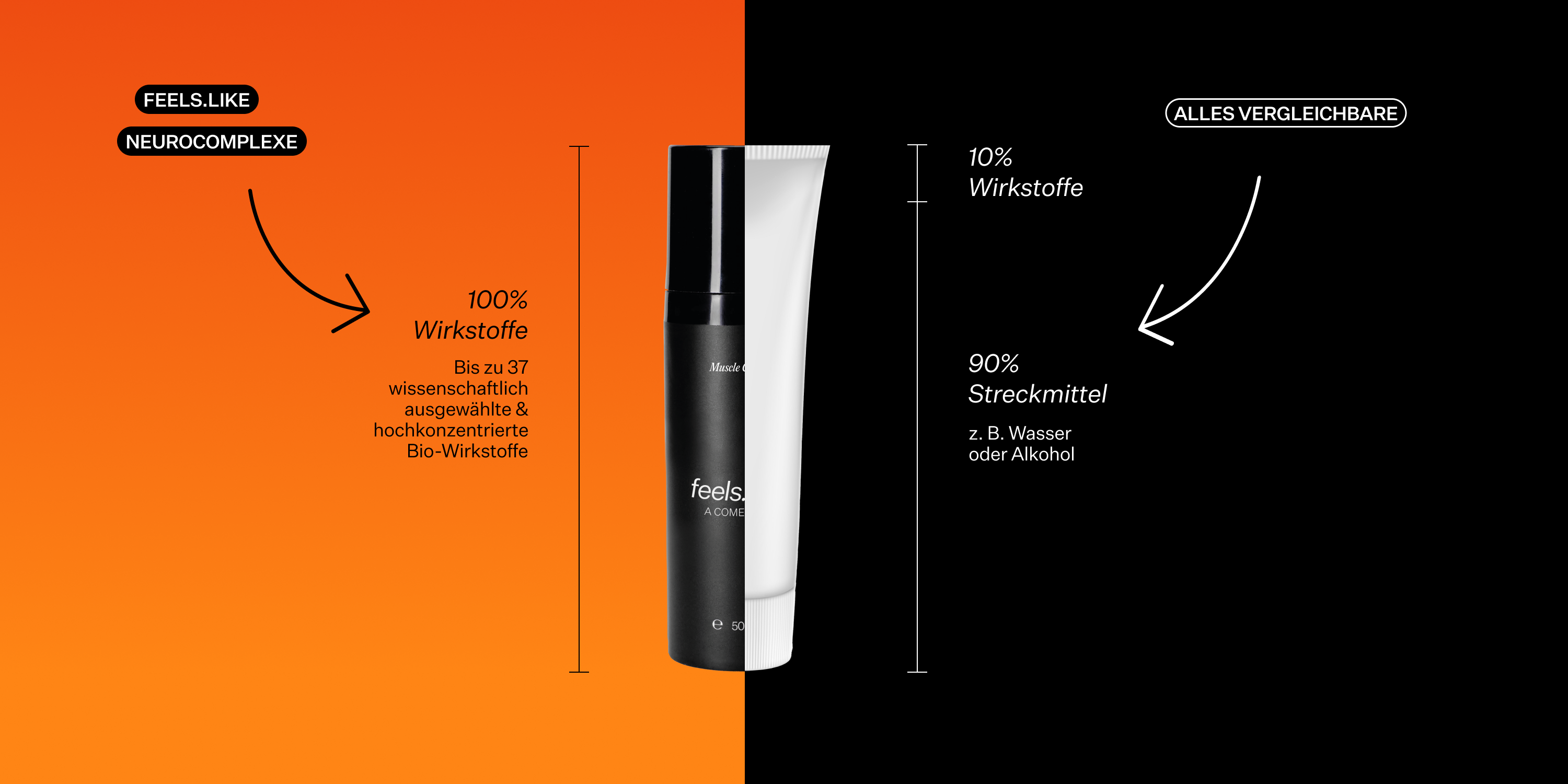Repair complex
• Supports the regeneration of injured skin
• Moisturizes & reduces itching
• Looses hardened scar tissue
• 37 natural ingredients (e.g. marigold, balloon vine)
• Highly effective & economical (0% fillers)
• Pleasant & gentle smell
• Triple laboratory tested
• Certified organic & 100% natural
• Vegan & cruelty-free
- Regular price
-
€54,90 - Regular price
-
- Selling price
-
€54,90
Pickup availability could not be loaded
How is the price calculated?
Our product prices result from a combination of the highest quality and a sustainable approach and overall lead to an above-average price-performance ratio:
- Quality: A major difference to comparable products is that we do not use fillers such as water or alcohol. This means that our products are not diluted with superfluous ingredients, but consist of 100% active ingredients. This high concentration of active ingredients, which is unique on the market, leads to a significantly higher effectiveness and thus also efficiency of our products. Athletes therefore need relatively little of our products to achieve the desired effect (see table in the product images). Our products are therefore in the higher price segment, but last longer due to their high efficiency. The cost per application of our products is therefore at a similar level to the cost of comparable products.
- Sustainability: A positive side effect of the high yield of our products is that it leads to less product packaging and other CO2 emissions associated with a product. Sustainability and quality are also a priority for our ingredients - we only use high-quality and organically certified (ECOGEA) natural ingredients in our products. In addition, every production batch undergoes the analysis procedures of three independent laboratories.
Application
Apply thinly to any open wound, scar or irritated skin once or several times a day. Before use, remove dirt and sebum from the skin.
Not suitable for pregnant women, infants and small children. Store dry and cool (< 20 °C).
ingredients
Can. Sat. Seed Oil*, Caprylic/Capric Triglyceride*, Hydrogenated Vegetable Oil, Helianthus Annuus Seed Oil*, Panthenol, Prunus Amygdalus Dulcis Oil*, Butyrospermum Parkii Butter*, Can. Sat. Leaf/Stem/Water*, Mangifera Indica Seed Butter*, Simmondsia Chinensis Seed Oil*, Aqua, Glyceryl Stearate Citrate, Bulbine Frutescens Leaf Juice, Glycerin, Octyldodecanol, Stearyl Stearate, Can. Sat. Ext., Saccharide Isomerate, Bisabolol*, Copernicia Cerifera Cera, Rhus Verniciflua Peel Cera, Arctium Majus Root Extract, Tocopherol, Aloe Vera Leaf Extract*, Calendula Officinalis Flower Extract*, Echium Plantagineum Seed Oil, Opuntia Ficus-Indica Flower Extract, Rosmarinus Officinalis Leaf Extract, Glyceryl Caprylate, Citric Acid, Anthemis Nobilis Flower Oil*, Helianthus Annuus Seed Oil Unsaponifiables, Cardiospermum Halicacabum Flower/Leaf/Vine Extract, Lecithin, Sodium Citrate, Potassium Sorbate, Sodium Benzoate
*aus kontrolliert biologischem Anbau








Repair complex
- Regular price
-
€54,90 - Regular price
-
- Selling price
-
€54,90


-

100% active ingredients - 0% fillers
By avoiding fillers such as water or alcohol, our products have a uniquely high concentration of active ingredients on the market, which makes our products particularly effective.
-

Scientifically based
Our innovative recipes are based on the latest scientific findings from sports medicine and natural sciences. We only use study-based plant active ingredients.
-

Triple laboratory tested
We have our products tested in three independent laboratories and can guarantee that our products do not contain any substances classified as doping agents.

Andere kauften auch:
-
Muscle complex
 Muscle complex
Muscle complex- Regular price
-
€19,90 €159,90 - Regular price
-
- Selling price
-
€19,90 €159,90 - Unit price
-
€99,80 / Per 100ml
Quick view
-
Night complex
 Night complex
Night complex- Regular price
-
€19,90 €74,90 - Regular price
-
- Selling price
-
€19,90 €74,90 - Unit price
-
€299,33 / Per 100ml
Quick view
-
Repair complex
 Repair complex
Repair complex- Regular price
-
€29,90 €89,90 - Regular price
-
- Selling price
-
€29,90 €89,90
Quick view
-
Recovery Bundle
 Recovery Bundle
Recovery Bundle- Regular price
-
€49,90 €119,90 - Regular price
-
- Selling price
-
€49,90 €119,90
Quick view














